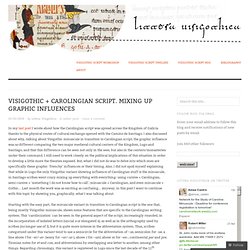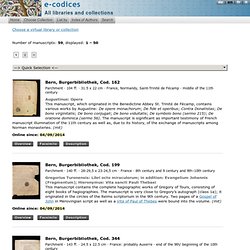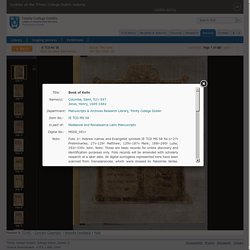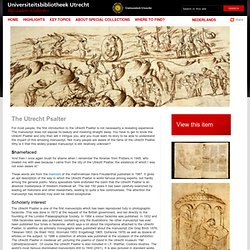

Palaeography tutorial - where to start. Reading When reading modern text, we generally identify whole words at a glance.

Look at this sentence: The huamn mnid deos not raed ervey lteter by istlef, but the wrod as a wlohe. The oredr of the ltteers in the wrod can be in a total mses but you can sitll raed it wouthit any porbelm. While this way of reading and comprehending whole words at a glance is very useful in the modern world, it can lead to incomprehension and mistakes when trying to read documents written in an old and unfamiliar style of handwriting. Be prepared to tackle an old document letter by letter if necessary. Standard Phrases Top of page Knowing the background to the document will help enormously with reading the handwriting.
Transcribing When copying a document always transcribe: this is when you retain the original spellings. Spelling. Alphabets and borders sampler. Belgica - Bibliothèque numérique de la Bibliothèque royale de Belgique - Manuscrits : Jan van Boendale, Brabantsche Yeesten. Visigothic + Carolingian script. Mixing up graphic influences. In my last post I wrote about how the Carolingian script was spread across the Kingdom of Galicia thanks to the physical routes of cultural exchange opened with the Camino de Santiago.

I also discussed about why, talking about Visigothic minuscule in transition to Carolingian script, the graphic influence was so different comparing the two major medieval cultural centers of the Kingdom, Lugo and Santiago, and that this difference can be seen not only in the sees, but also in the centers/monasteries under their command. I still need to work closely on the political implications of this situation in order to develop a little more the theories exposed. But, what I did not do was to delve into which ones are specifically these graphic ‘frenchy’ influences or their timing. Starting with the easy part, the minuscule variant in transition to Carolingian script is the one that, being mostly Visigothic minuscule, shows some features that are specific to the Carolingian writing system.
Medieval Books of Hours. E-codices. Choose a virtual library or collection Swiss Manuscripts Abroad Dispersed Manuscript Parts Abroad Number of manuscripts: 59, displayed: 1 – 50 Bern, Burgerbibliothek, Cod. 162 Parchment · 104 ff. · 31.5 x 22 cm · France, Normandy, Saint-Trinité de Fécamp · middle of the 11th century Augustinus: Opera This manuscript, which originated in the Benedictine Abbey St.

Online since: 04/09/2014 Bern, Burgerbibliothek, Cod. 199 Parchment · 140 ff. · 28-29,5 x 23-24,5 cm · France · 8th century and 9 century and 9th–10th century Gregorius Turonensis: Libri octo miraculorum; in addition: Evangelium Johannis (Fragmentum); Hieronymus: Vita sancti Pauli Thebaei This manuscript contains the complete hagiographic works of Gregory of Tours, consisting of eight books of hagiographies. Bern, Burgerbibliothek, Cod. 344 Parchment · 143 ff. · 24.5 x 22.5 cm · France: probably Auxerre · end of the 9th/ beginning of the 10th century Bern, Burgerbibliothek, Cod. Biblia latina (Vulgata) Cologny, Fondation Martin Bodmer, Cod. Lindisfarne Gospels Exhibition. DRIS Trinity College Library Dublin.
Title: Book of Kells Name(s): Department: Item No.

Is part of: Digital No MS58_001r Note: Folio 1r: Hebrew names and Evangelist symbols IE TCD MS 58 fol.1r-27r Preliminaries; 27v-129r Matthew; 129v-187v Mark; 188r-290r Luke; 292r-339v John. Abstract: The Book of Kells contains the four Gospels in Latin based on the Vulgate text which St Jerome completed in 384AD, intermixed with readings from the earlier Old Latin translation. Type of work: Dimensions: 33 x 25 cm. University Library Utrecht. For most people, the first introduction to the Utrecht Psalter is not necessarily a revealing experience.

The manuscript does not expose its beauty and meaning straight away. You have to get to know the Utrecht Psalter and only then will it intrigue you; and you must learn its story to be able to understand the impact of this amazing manuscript. Not many people are aware of the fame of the Utrecht Psalter. Why is it that this widely praised manuscript is still relatively unknown? 'And then I once again blush for shame when I remember the librarian from Poitiers in 1948, who treated me with awe because I came from the city of the Utrecht Psalter, the existence of which I was not even aware of.'